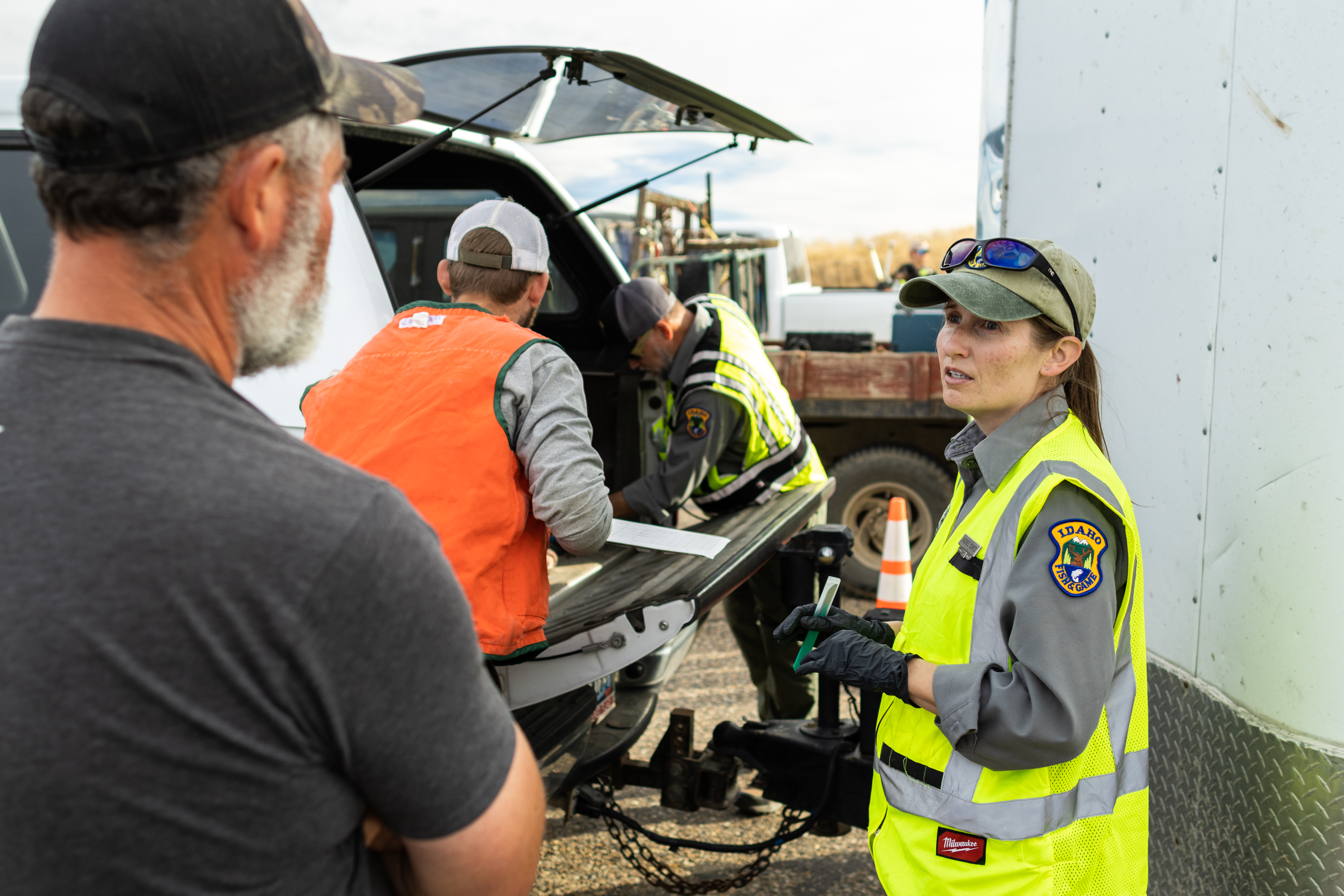Check stations are an opportunity for Fish and Game staff to talk to thousands of hunters and see thousands of harvested animals. The goal is for Fish and Game personnel to get information and learn what's happening in the field and also answer questions, collect samples for chronic wasting disease, and then quickly get folks back on their way. Note: Anglers and trappers also have to stop at check stations if coming from or going to those activities.
If you didn't harvest any game, staff will ask you some questions and then, boom, you're done. But remember you still have to stop, and you can be cited for bypassing a check station.



